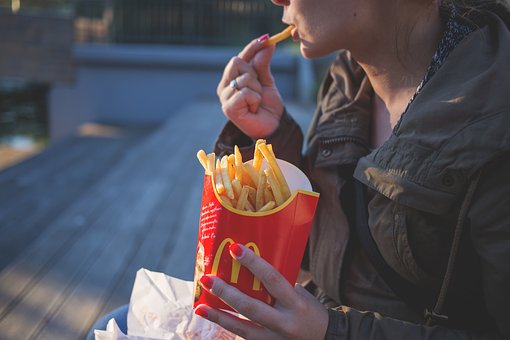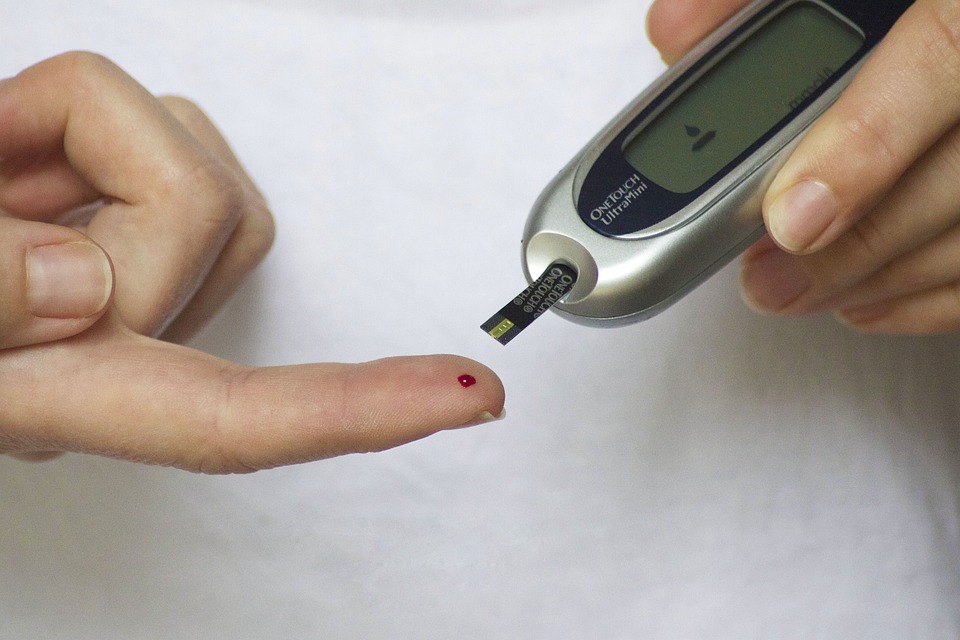
There’s a reason carb cycling is so popular.
Those who really like this approach, which are typically very fit individuals, say that it is the best diet. They say carb cycling can help you:
- Get the accelerated fat loss that comes from a low-calorie, low-carbohydrate diet… while still eating carbs and… without sacrificing exercise performance.
- Avoid frustrating fat loss plateaus by better regulating hormones like leptin and insulin.
- Gain muscle without gaining much fat.
But are these claims true? Even if certain facts are true, will they really be applicable to you?
What Is Carb Cycling?
The concept of carb cycling involves varying your daily intake of carbohydrates, by alternating between high and low intake days. Perhaps tomorrow, you’ll indulge in a feast of spaghetti, but the day after that, you’re likely going to focus on a low-carb diet. Generally, one should consume higher amounts of carbohydrates on days with more strenuous physical activity, and then decrease the intake on days without as much movement or with miscellaneous activities.
One more way to look at it is that carbohydrates are the fuel of choice for our body, analogous to the way vehicles run on petrol. In other words, if you plan on doing a lengthy drive across the country, but you anticipate there being times when you will stay in one spot for more than just a single day instead of driving,
Your highest carbohydrate days would be the times when you fuel up the car, alternating them with times when your driving is more reduced. Essentially, you are not likely to put fuel in the car if you are not going to use it for a lengthy time period, correct?
Carb cycling could be an option to consider if you are looking for other motivations besides energy. People also partake in carb loading to alter their physical appearance to fit their visual standards since eating a lot of carbs typically makes muscles appear “bulkier”.
Sometimes, the total number of calories ingested is greater on days when carbohydrates are consumed in abundance, although certain people are able to maintain their calorie intake while changing the amounts of carbohydrates that they consume. The level of protein intake stays the same regardless of the day, while fats and carbs tend to go up or down together.
Dr. Aastha Kalra, an NYC doctor specializing in weight reduction, suggests that individuals could perhaps modify their carb consumption periodically, such as changing it every week or periodically every month. Unlike other diet recommendations found online, she claims carb cycling has verifiable evidence to support it.
She states that research shows that when individuals reduce their weight or calorie consumption, their basal metabolic rate diminishes. Consequently, when more calories are eaten and the amount of carbs consumed is higher, the basal metabolic rate will be kept intact and the appetite lessened.
Who Should Carb Cycle?
Cycling through carbohydrates is recommended for amateur athletes, desk workers, those who exercise at the weekend, and all others who don’t need a steady source of carbs. This method should not be used by either professional athletes or individuals who are overweight. Dr. Jeff Golini, a nutritionist at Winner Circle Athletics, a training facility in California aimed at young athletes, outlines why consuming a variable quantity of carbohydrates may not be advantageous to athletes.
“Athletes burn up their glycogen stores very quickly. He underlines the necessity of frequently replenishing with wholesome and pure carbohydrates. ” The justification for this is that you need to use your days off to recover and refueling by consuming carbohydrates on these days is just as important as doing so on game days. I would advise athletes to concentrate on ingesting simple carbohydrates prior to engaging in exercise.
It is important to remember that simple carbohydrates such as white bread, pasta, pastries, and sugar should be avoided. Rather than complex carbohydrates (like whole grains and brown rice) that give off energy gradually, these carbohydrates produce short-term energy boosts.
In this case, “athlete” is being used to describe individuals who either have a professional background or make a point to dedicate six days a week to their training. Golini suggests that those who exercise regularly may not experience a great deal of advantages from cycling carbohydrates.
He goes on to say that if the discussion is about an individual who exercises only on the weekends or someone who simply works out, this is an entirely distinct situation. ” Assuming that their objective is to gain weight, carb cycling is not necessary. For someone wanting to shed body fat, it is important to switch up or cycle their carbohydrates.
Those who are not well-versed in monitoring their calorie intake should not utilize carb cycling for now. Keeping track of the number of calories and each macronutrient (protein, carbs, and fats) you consume can be a lengthy and laborious process. Carb cycling adds another layer of complexity. It may be beneficial for people who are familiar with noting their intakes of carbohydrates, proteins, and fats more than those who lack experience dieting.
Doctor Kalra suggests that people who partake in carb cycling may find themselves in a state of confusion, and might also struggle to adhere to the diet. Someone prone to binge eating should be conscious to avoid the activity, as they may consume too many carbs and calories.
It should be underscored that carb cycling is usually employed after someone has already achieved relatively little body fat and/or is quite muscular. Certain investigations have not provided much help to individuals that are overweight or fat, for whom the total number of calories consumed should be the main point of attention.
What Does Carb Cycling Do, Exactly?
There’s hardly any human research on carb cycling. Most of the evidence that is available concerning carb cycling is based on stories and experiences, as well as a few conjectures that originate from biochemistry.
On a scale of one to ten for how trustworthy scientific evidence is, Carb Cycling rates highly low, hovering closer to one than ten.
Remember this when you come across statements concerning the use of carb cycling.
Okay, enough with the disclaimers. Here’s what carb cycling might do.
#Carbohydrates cycling may encourage your metabolism to stay active when you are deliberately shedding fat.
If you decrease your food intake, such as for weight loss, your body will respond in various ways. For example:
- Your basal metabolic rate (BMR) drops
- You expend less energy when you exercise
- Your daily activity outside of workouts tends to decrease naturally (you move around less without even realizing it).
If you want your weight-loss to persist, it is necessary to lower your food intake as you become lighter.
Let’s hypothesize you commence a diet with 2,000 calories daily, and gradually slim down over time. Over time, you might find that stops working. You could potentially have to limit your calorie intake to 1,800 to jumpstart your weight loss again.
This condition is referred to as metabolic adaptation and its drawbacks are obvious.
As your body gets used to the metabolism rate, you must limit the amount of food you consume.
Therefore, attaining and sustaining your goal weight in the future will be more difficult.
Adherents to carb cycling claim that this methodology can forestall the development of metabolic acclimatization.
The rationale for this approach is that introducing periodically high-carb and high-calorie days stimulates your metabolism, preventing it from settling into a pattern.
Despite the lack of evidence backing it, there has been no denial of this assertion.
Metabolic adaptation is the same concept utilized by reverse dieting, a more complex nourishing approach.
Carb cycling may facilitate the control of hormones which are affected by fat loss.
Intense dieting can mess with your hormones. Specifically:
- Leptin
- Thyroid hormones
- Reproductive hormones (testosterone and estrogen)
Particular attention should be paid if you want to shed fat, particularly in regards to leptin. Although thyroid hormones, testosterone, and estrogen seem to be the subjects of most conversations,
Fat stores release leptin, which is crucial in controlling appetite and adjusting metabolism.
The higher the level of fat mass in the body, the greater the concentration of leptin in the bloodstream. The level of leptin in the brain determines how hungry you are, how much food you should eat, how much energy is absorbed from the food you eat, and how you should use the energy taken in.
That’s a lot of factors related to fat loss.
It becomes very intriguing when you restrict the amount of calories consumed; leptin levels decline, even if it’s only for a brief period.
Your brain is informed that you must consume food in order to avoid hunger.
Bottom line: Whenever you don’t consume an adequate amount of food, Leptin is one of the factors which cause you to feel ravenous.
Leptin is said to be the regulator of other hormones, meaning that when its levels lower, the hormones related to the thyroid gland and reproduction will decrease accordingly.
What is the connection between this and carb cycling?
The concept is that we raise our leptin levels for a short period by consuming increased portions of carbs periodically (this is also referred to as refeeding).
If this were to happen, it could communicate to your brain that your hunger has been satisfied, hence resulting in a short period of time with less desire or need to eat.
As a result of this snack that is high in carbohydrates and calories, it could possibly be easier to keep to a diet containing fewer calories on days when carbohydrates are restricted. You may be able to lessen or avoid the repercussions that come with a lack of other important hormones.
There’s some evidence for this, though it’s very limited. Moreover, these breaks usually last longer than a single day.
Still, there may be very real psychological benefits.
Consuming fewer carbohydrates and calories can become a habit; however, purposely consuming more of each can be refreshing and beneficial physically and psychologically. (Who doesn’t love a “cheat” day?)
Carb cycling could help in maintaining a diet that is low in carbohydrates.
Reducing carbohydrate intake can be effective for weight reduction, especially for those with type 2 diabetes and metabolic syndrome. It is worth mentioning, however, that diets which are low in fat and high in carbohydrates may be just as successful as diets high in fats.
What counts as low carb? Any dietary plan which provides less than 30% of daily calories from carbohydrates is commonly referred to as a “low-carb diet.” Some professionals may disagree regarding the exact amount, with some advocating for 20%, and others coming out in favor of a smaller percentage.
A ketogenic diet is a high-fat, moderate-protein, low-carb regimen that is becoming increasingly prevalent. The carbohydrate content is incredibly low, but the fat content is incredibly high (usually less than 10 percent carbohydrates and over 60 percent fat).
Although low-carb and ketogenic diets may be helpful for weight loss, most people show difficulty in following them on a long-term basis. The same applies to any other kind of dieting program that involves limitations.
It has been put forward that alternating between lower-carbohydrate and higher-carbohydrate days could possibly facilitate people in maintaining a reduced-carb diet plan and their outcomes for the longer term. For somebody following the ketogenic diet, this is called a cyclic keto diet.
You could look at it this way: Stick to a ketogenic diet most of the time, but you can make room for treats by taking a few days off from the diet where you can enjoy higher carbohydrate meals.
Carb cycling could potentially help those on a low-carb diet in the realm of athletics.
Athletes may sometimes follow a ketogenic diet to become adapted to using fat as an energy source. Becoming fat-adapted lets you utilize higher amounts of fat at harder training levels, as affirmed by several investigations.
It’s always difficult to resist the idea of burning more fat. But how might it help with exercise performance?
That deserves a little more explanation.
To provide energy for activities lasting a long time, your body usually depends heavily on carbohydrates kept in the shape of glycogen.
It’s unfortunate that the amount of glycogen your body can store is limited. If you stay active for an extended duration of time, you will eventually use up all of your carbohydrates and have to reduce your speed.
Endurance athletes usually need to ingest between 60 to 90 grams of carbohydrates during their competitions in order to make it through. They are supplied with additional energy to sustain their strenuous activity.
This is where being fat-adapted may come in handy.
Our physical frames are apt to hang onto copious amounts of fat, which manifests in the form of fatty tissue.
Despite being slim, people possess 15 times more vitality in their fatty tissue than that which is stored in their carbohydrate supply.
When someone is fat-adapted, they intensely rely on fat instead of carbohydrates to sustain vigorous forms of endurance training.
This would eliminate the need for you to be bothered by the annoyance (and conceivable gastrointestinal issues) of drinking an energy gel every 90 minutes when doing an extensive workout. Plus, it might make you less likely to “bonk.”
It has been proposed that adapting to a high-fat diet may assist in improving physical activity results in addition to aiding with recovery times, however, this is an area of contention among professionals in the field of research.
It is crucial to keep in mind that the prior was solely based on potential improvements in endurance performance that could be achieved through following a ketogenic (low-carb, high-fat) diet.
So how does carb cycling fit in?
You can become trained to burn fat by following a ketogenic diet over a few days. But afterward, you follow up with a couple of days with a high carbohydrate intake.
These periods of ingestion of an abundance of carbohydrates help you to replenish your glycogen stores to their peak capacity. The desire is to carry out this without troubling the potential advantageous results of the ketogenic diet.
You can have the greatest of both realities: A generous measure of fuel to use, from both carbohydrates and fat.
It must be realized, though, that at the moment, there is no proof showing that a ketogenic diet is helpful in performance across the board.
Given the present understanding, it appears that for many individuals, attempting a cyclic ketogenic diet solely for the purpose of better performance would be more effort than it’s worth.
Alternating between periods of high and low carb consumption may help to build muscles without an associated weight gain.
Fat gain almost always accompanies muscle growth.
Some followers of the carb-cycling diet claim that the secret to building muscle and avoiding excessive fat gain is the influence of insulin.
Whenever you consume carbohydrates, your blood glucose increases, prompting the release of insulin.
Insulin helps regular your blood sugar levels. It has an essential function in building muscles and storing glycogen.
The hypothesis goes:
- If you eat high carb on days you resistance train, you can take advantage of insulin’s muscle-building and recovery properties
- If you eat low-carb on rest or conditioning workout days, you can simultaneously lose fat and improve insulin sensitivity, making the high-carb days even more effective
That’s the high-level version. But the reality? It is far more intricate than what it appears to be, and no scientific assessments are there to back it up.














